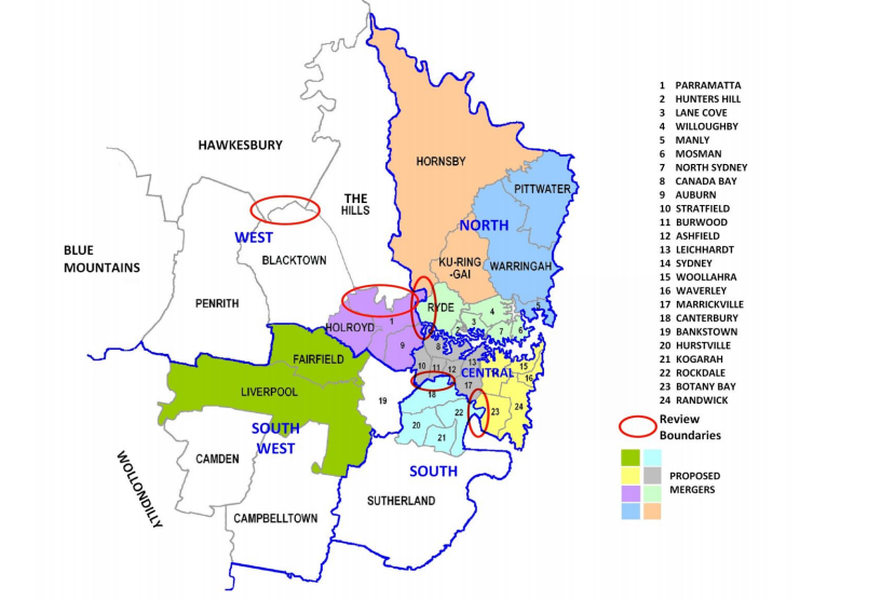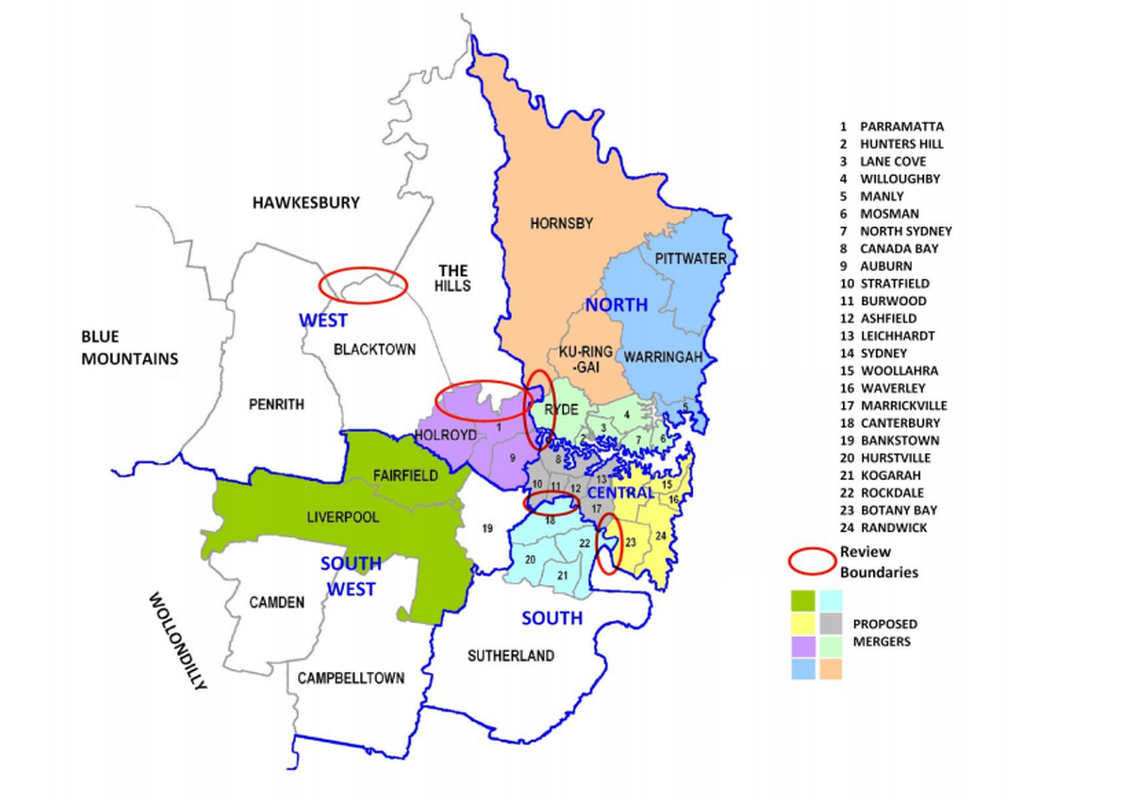The NSW government‘s plan to merge a significant number of the state’s councils could have dramatic implications for planning across the state, particularly in Sydney.
A three year independent review recommended that the number of councils in Sydney fall from 41 to between 15 and 18, and identified problems with the financial viability of many smaller councils.
The proposed mergers have elicited strong reactions from councils both large and small, with the City of Sydney speaking out against the proposed changes at a special council meeting.
Lord Mayor Clover Moore set forward her council’s submission to the state government, which warned that the city being amalgamated with other councils could have dire consequences.
“The impact of another city amalgamation at this current time would put significant private investment at risk and impact negatively on Sydney’s future prosperity and the NSW economy,” the submission reads.
The City of Ryde’s mayor Bill Pickering reacted strongly to a proposed takeover by a neighbouring council that infringed on his council’s boundaries, describing the move as “desperate and dateless.”
Pickering likened Hornsby Council to, “a spoilt brat with delusions of grandeur with whom no one else wants to deal.”
“Hornsby cannot even manage the operation of a local swimming pool, so how do they think they could handle a billion-dollar business park. They’re dreaming!” he said.
However, NSW Australian Institute of Architects chapter president Shaun Carter said that reducing the number of councils would make it easier to envision and plan a cohesive future for Sydney.
“We need to have a conversation about what sort of Sydney we want to have,” he said. “Are our councils suitable for how we want to see Sydney grow or change or be in the future?”
Carter said once people start talking about the future of the city, questions arise over whether its right for small areas to develop special interests, or if a “broader, more social way of thinking” is needed.
“It’s necessary that people fundamentally identify with their area – they take possession of it, and they look after it – but that should not be so pervasive that it stops all the other good things that we want to have happen in a city,” he said.
The state government have set up a $1 billion Fit for the Future reform package, and NSW councils were all due to submit proposals demonstrating their financial soundness, efficient operation and future plans by 30 June 2015.
There are 142 councils in NSW, with 41 in metropolitan Sydney alone, an area that has a population of around 4.6 million.
Local Government NSW president Keith Rhoades expressed strong opposition to the mergers, describing local government as “grassroots democracy at its most fundamental.”
“The state government has failed to convince residents that forced amalgamation is a good idea,” he said. “The majority of residents feel that their local council is doing a good job and they have concerns that the proposed mega councils will not have capacity to address local issues.”
Sydney University urban planning researcher Dr Adrienne Keane said that it was very important to take into account the specialized knowledge councils have of their communities while also being able to plan effectively on a regional level.
“The problem in NSW is that disconnect between looking after local environments and local communities, but also needing to address longer-term needs such as infrastructure and dealing with bigger populations and making sure we’ve got hospitals, roads and schools in place,” she said.
“That’s when you need a good relationship between the local community and the regional vision.”
The Local Government Review Panel , and The Independent Pricing and Regulatory Tribunal is set to report back to the state government on 16 October 2015.
In February 2015 the West Australian goverment halted its plans to halve the number of Perth councils after backlash from councils over proposed amalgamations.
















